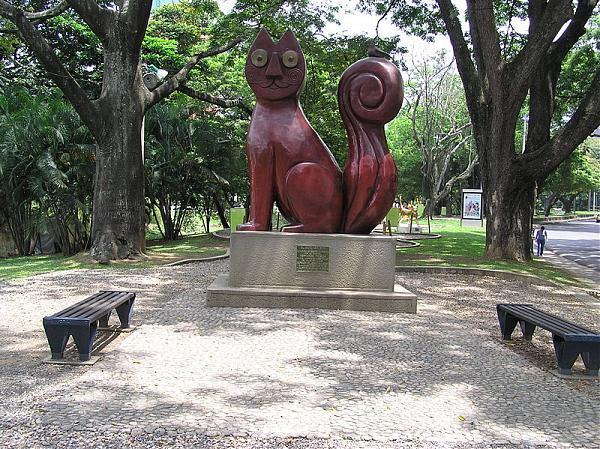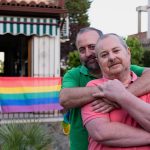CALI COLOMBIA
Holiday Houseboys
To fully appreciate Cali you need to book a Holiday Houseboy, your local gay friendly tour guide. If you want to see the tourist sites, places off the beaten track or discover new experiences, the Holiday Houseboy is there to help you. He looks after your safety and welfare at all times. It is a fun way to explore a new city.
Oscar
Oscar is a professional tour guide. In fact he is a professional dancer tourist guide. Unique in that he can combine both a tour of Cali along with a dancing lesson if you want to learn the bachata or something similar. Oscar has a friendly personality and loves to help people in the hope that you have the best experience that his country has to offer. Moreover he can show you the gay places of Cali if that is what you would like to see. To book Oscar, please click on the green button below.
Oscar is a non-smoker, and speaks English and Spanish.
Total cost for the guide services of Oscar for 8 hours during the day time = a non refundable deposit of USD 55 by Paypal or major credit card (Visa, Mastercard, American Express) PLUS USD 70 in cash to Oscar after his services. Total 125 US dollars.
Similarly the total cost for the guide services of Oscar for 4 hours during the day = a non refundable deposit of USD 35 by Paypal or major credit card (Visa, Mastercard, American Express) PLUS USD 40 in cash to Oscar after his services. Total 75 US dollars.
If you want a gay night bar tour of 4 hours at night = a non refundable deposit of USD 35 by Paypal or major credit card (Visa, Mastercard, American Express) PLUS USD 50 in cash to Oscar after his services. Total 85 US dollars.
This does not include transport, entrance fees or any food & beverage costs. Please pay the guide’s expenses when he is with you.
How To Book A Holiday Houseboy
To book any of our Holiday Houseboys please go to the booking form.
Or send an email to info@holidayhouseboys.com.
Alternatively WhatsApp +34-676-78 63 51.
Remember a Holiday Houseboy is your gay friendly tour guide who looks after your safety and welfare at all times.
Please note these are guide services and not sexual services.
Our other destinations in Colombia are Bogota, Cartagena and Medellin.
Highlights of Cali
El Gato del Rio (The Cat of the River) is one of the symbols of Cali. A donation from the painter and sculptor Hernando Tejada in 1996, this bronze statue stands on the busy intersection of Avenida del Rio and West 4th Street by the river. Then the Cali Chamber of Commerce came up with a really good idea in 2006. They invited other known artists to paint 15 more statues of cats for the park, and they called them “The Cat’s Girlfriends“. One such artist was Maripaz Jaramillo. And another Omar Rayo, both famous artists of the day. Today the Cat of the River and his girlfriends or “his brides” as they are sometimes called, have become a major tourist attraction in Cali Colombia.
Cali itself has a population of over 2.3 million people, making it the third most populous cities in Colombia after Bogota (8.1 million) and Medellin (2.5 million). It has a tropical climate with a dry summer. The Western Cordillera range of mountains blocks the front from the Pacific. As a result of the South reaching over 4100 metres (13,450 feet), and only 2000 metres in the north, the south is wetter than the drier north region of the city.
Spanish Colonisation
Sebastián de Belalcázar, a Spanish pioneer under the orders of Francisco Pizarro, founded Cali or its full name Santiago de Cali on 25th July 1536. Originally founded north of current day Cali, the city resettled to its current location under the orders of Belalcázar. When Spanish colonisation began, the Spanish owned haciendas dedicated themselves to cattle ranching and the growing of sugar cane. Its importance grew with the mining from the interior. In 1810 an uprising took power claiming its independence. However the Spanish Crown claimed their territory back five years later after King Ferdinand VII of Spain sent a large army under Pablo Morillo. This interim five year period is known as the “Patria Boba” period. The Literal translation being the “Silly Fatherland”.

Simon Bolivar passed through Cali in 1822, but as he was busy with his war, Francisco de Paula Santander took control of Gran Colombia. One of Santander’s achievements was to separate the Church from the State, This enabled the establishment of the Santa Librada School in the Convent of San Agustín. Bolivar passed through Cali again in 1929 to much popular acclaim.
Following the Republic of New Granada in 1832, it included the region of Buenaventura of which Cali was part. With a new governor in 1835, they constructed the Ortiz bridge facilitating movement between the north and south of the city. More disturbances followed in 1841 under Orbando. This slave rebellion was successful and the insurgents took control. Education flourished though with the importation of European teachers at the Santa Librada School. In 1849 slavery was abolished but this caused chaos. It resulted in various bandit groups to ransack at any opportunity leading to insecurity and a lack of economic development.
Cali’s development was not an easy one. Suffering from civil wars, and its remoteness, only after the completion of various infrastructure projects did the economy begin to bloom. Instrumental for this were the opening of the Panama Canal (1914), the railway construction (1915) and major road completion (1945). Additionally the construction of an aqueduct in 1930 also assisted to the city’s prosperity as did the general industrialisation of sugar cane and coffee production.
Tourism in Cali Colombia
Nowadays stand outs on the tourist trial include the Cerro del Cristo Rey. This Monument of Christ the King at 26 metres high stands on Cerro los Cristales. So called because of the founding of quartz in the area in a village to the west of Cali. The story goes that Father Arteaga presented the sculptor Alideo Tazzioli Fontanini with the plan of the model. Alideo dismissed this, saying that he would only undertake the work using his own plans. Eventually granted, Alideo went to work on its construction. It took 4 years to build.
It goes without saying that another iconic monument is of its founder Sebastián de Belalcázar. His right hand points west to the Pacific Ocean while his left hand holds his sword. However in 2021 a radical group tore it down on the grounds that it was symbolic of violence against its indigenous peoples. In a similar way, the same reasoning was used against Cecil Rhodes on the African continent. Fortunately the monument was put up again at the earliest opportunity in the same year. The restoration of history took priority.

Simon Bolivar passed through Cali in 1822, but as he was busy with his war, Francisco de Paula Santander took control of Gran Colombia. One of Santander’s achievements was to separate the Church from the State, This enabled the establishment of the Santa Librada School in the Convent of San Agustín. Bolivar passed through Cali again in 1929 to much popular acclaim.
Following the Republic of New Granada in 1832, it included the region of Buenaventura of which Cali was part. With a new governor in 1835, they constructed the Ortiz bridge facilitating movement between the north and south of the city. More disturbances followed in 1841 under Orbando. This slave rebellion was successful and the insurgents took control. Education flourished though with the importation of European teachers at the Santa Librada School. In 1849 slavery was abolished but this caused chaos. It resulted in various bandit groups to ransack at any opportunity leading to insecurity and a lack of economic development.
Cali’s development was not an easy one. Suffering from civil wars, and its remoteness, only after the completion of various infrastructure projects did the economy begin to bloom. Instrumental for this were the opening of the Panama Canal (1914), the railway construction (1915) and major road completion (1945). Additionally the construction of an aqueduct in 1930 also assisted to the city’s prosperity as did the general industrialisation of sugar cane and coffee production.
Tourism in Cali Colombia
Nowadays stand outs on the tourist trial include the Cerro del Cristo Rey. This Monument of Christ the King at 26 metres high stands on Cerro los Cristales. So called because of the founding of quartz in the area in a village to the west of Cali. The story goes that Father Arteaga presented the sculptor Alideo Tazzioli Fontanini with the plan of the model. Alideo dismissed this, saying that he would only undertake the work using his own plans. Eventually granted, Alideo went to work on its construction. It took 4 years to build.
It goes without saying that another iconic monument is of its founder Sebastián de Belalcázar. His right hand points west to the Pacific Ocean while his left hand holds his sword. However in 2021 a radical group tore it down on the grounds that it was symbolic of violence against its indigenous peoples. In a similar way, the same reasoning was used against Cecil Rhodes on the African continent. Fortunately the monument was put up again at the earliest opportunity in the same year. The restoration of history took priority.
















